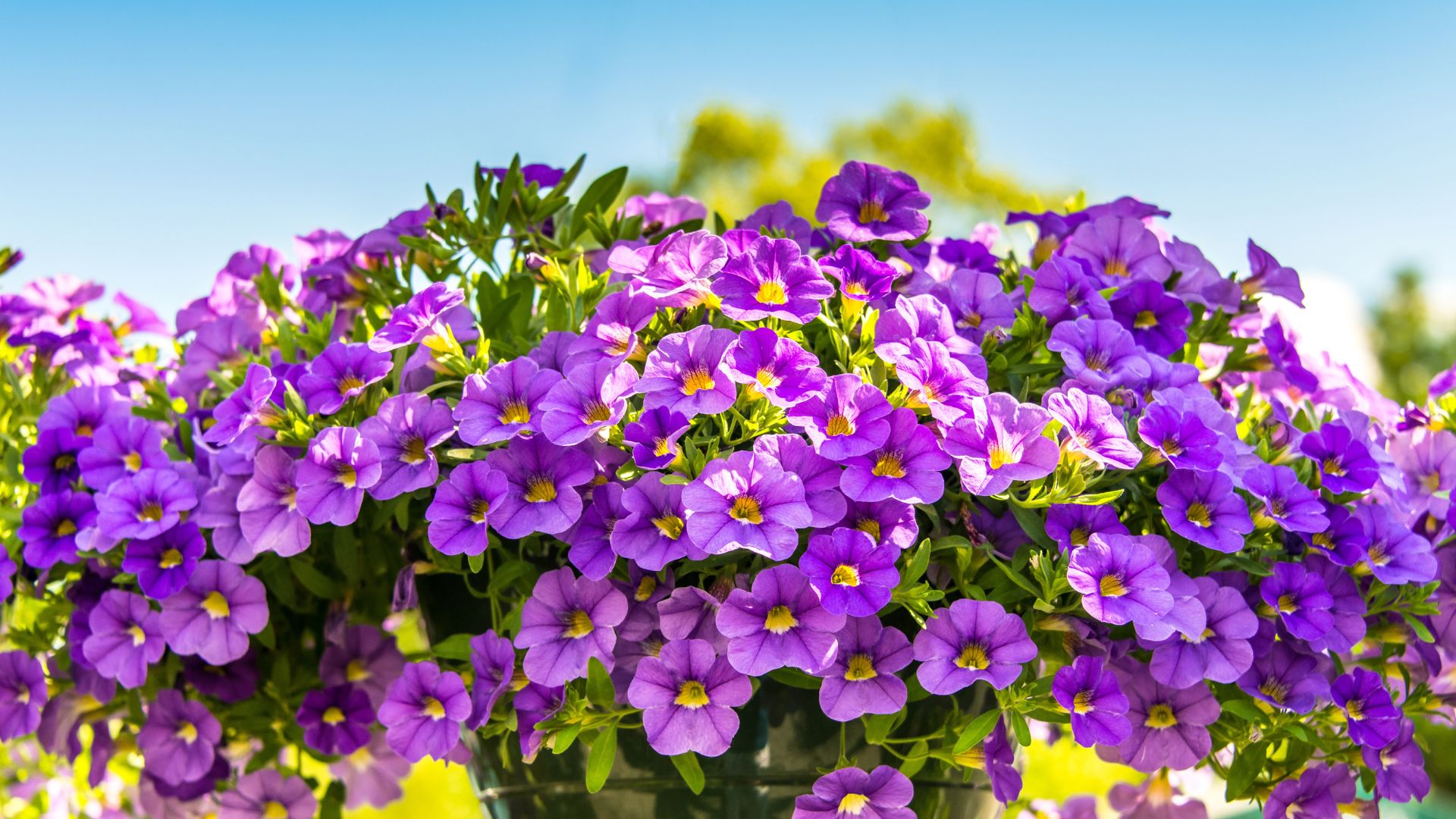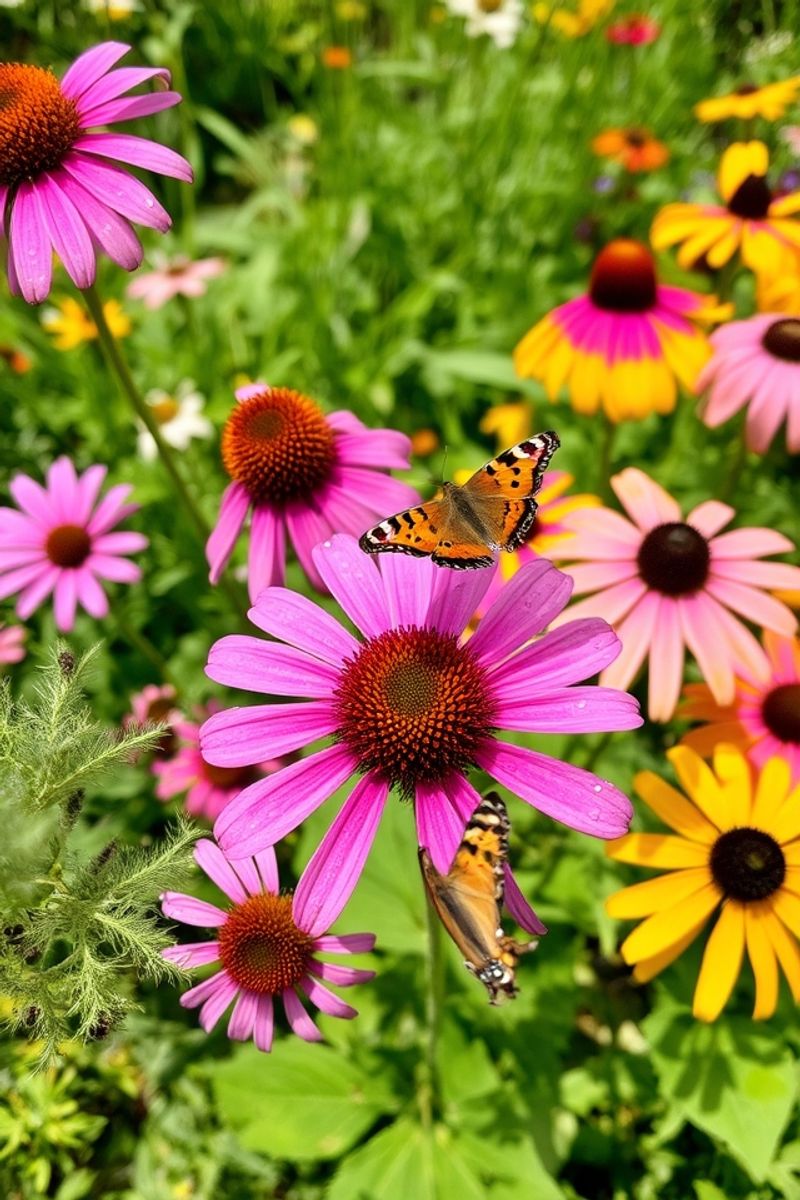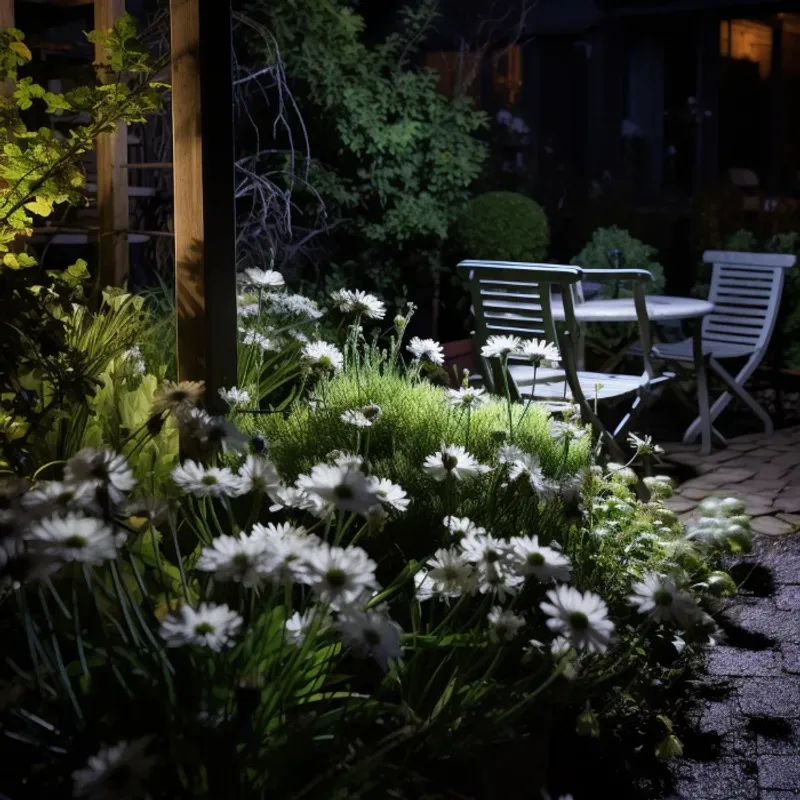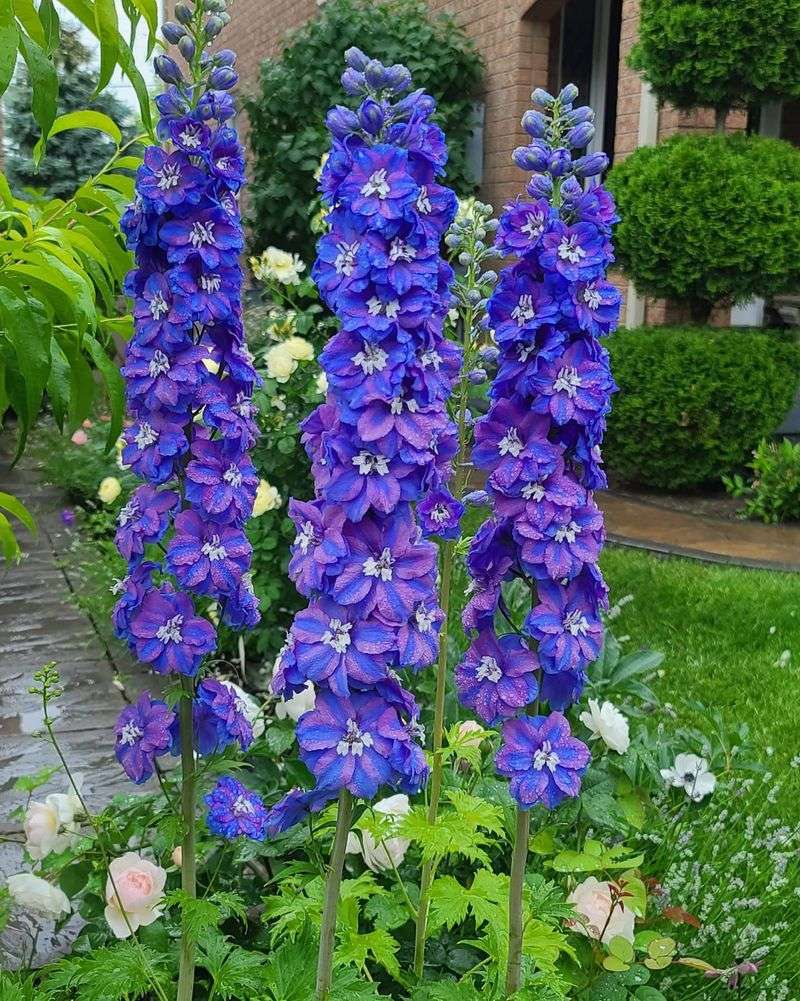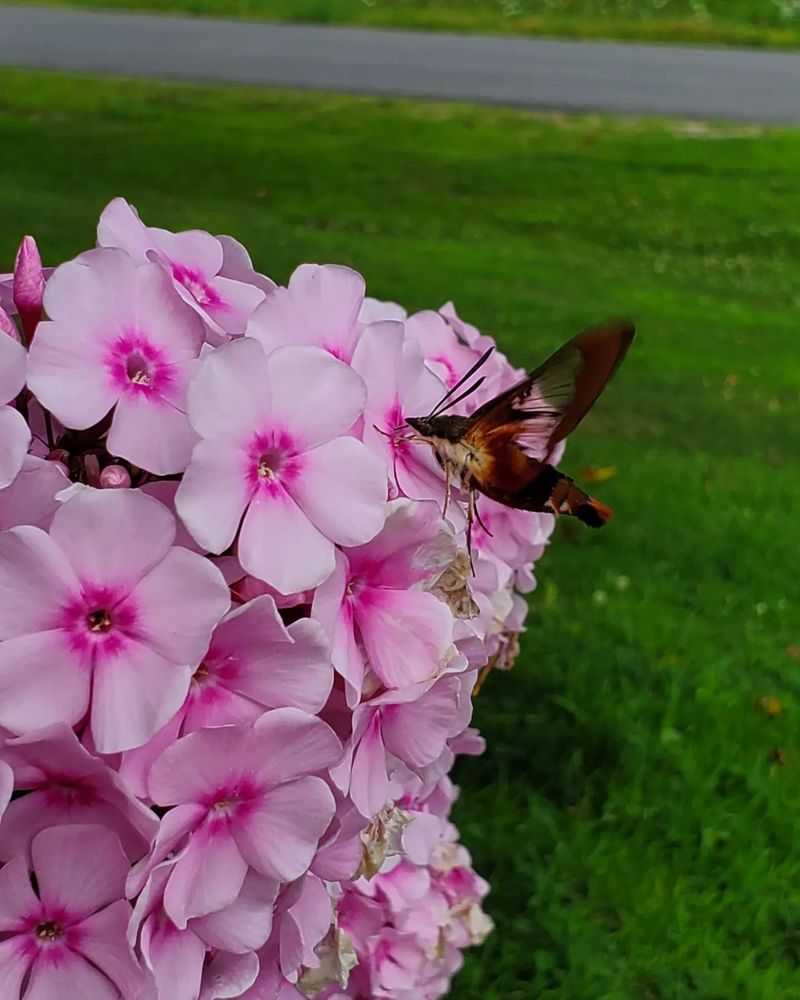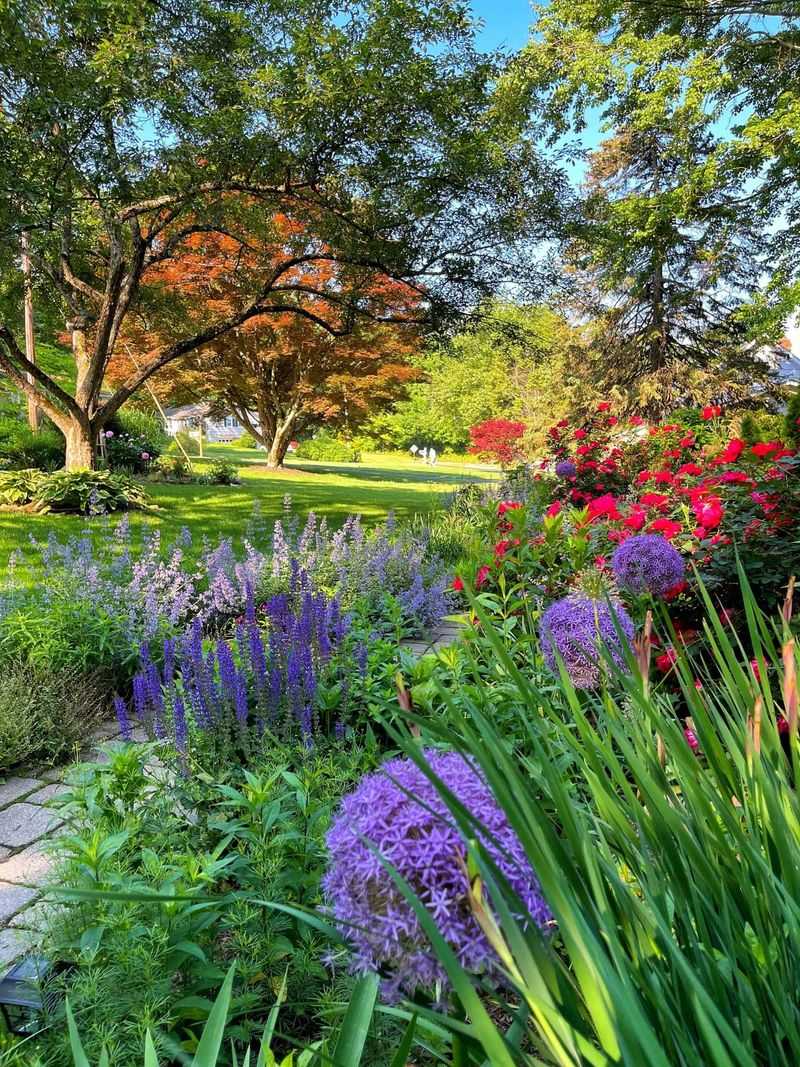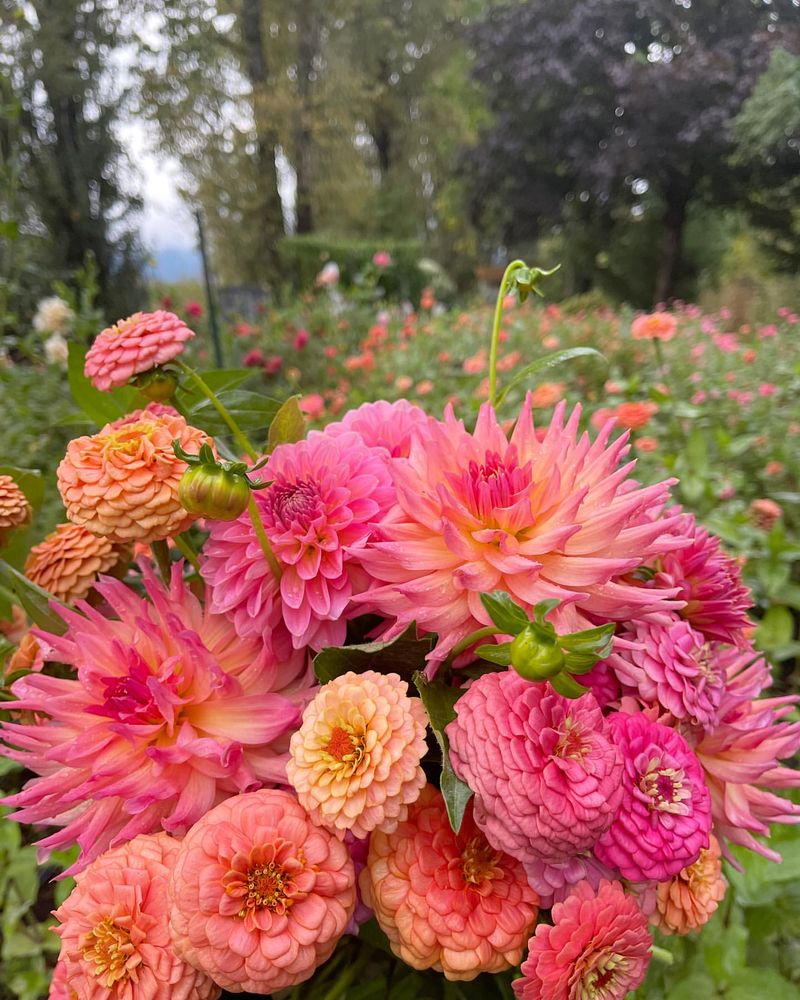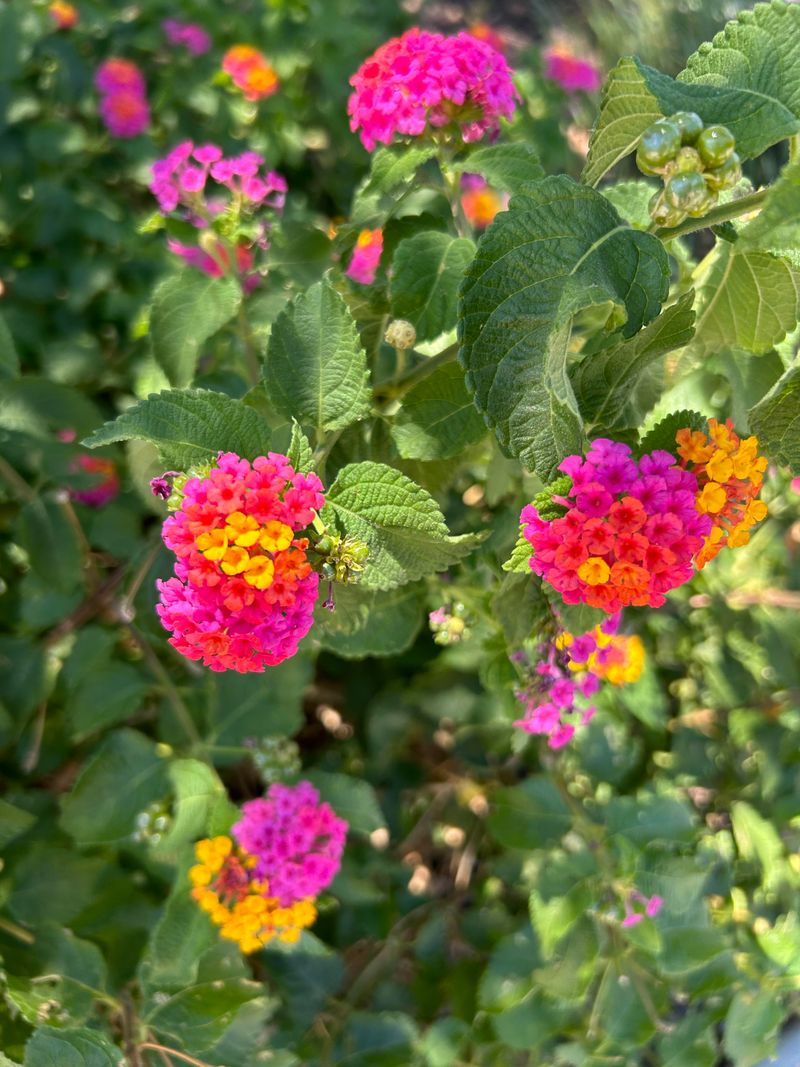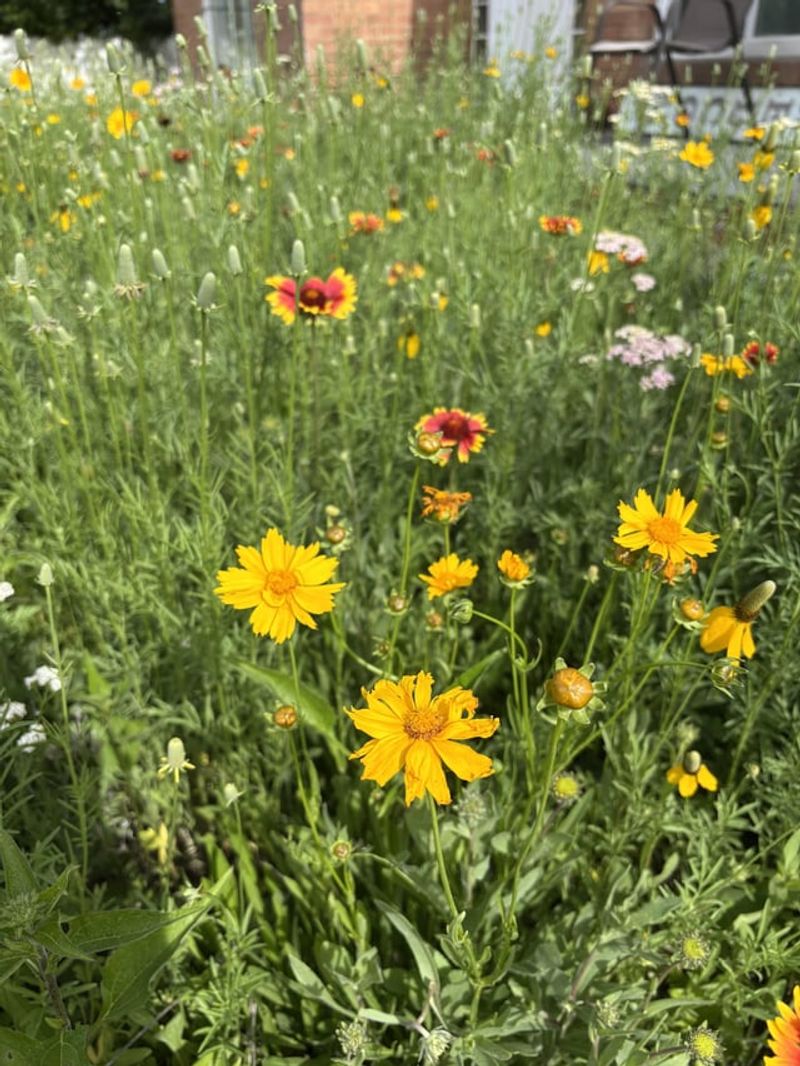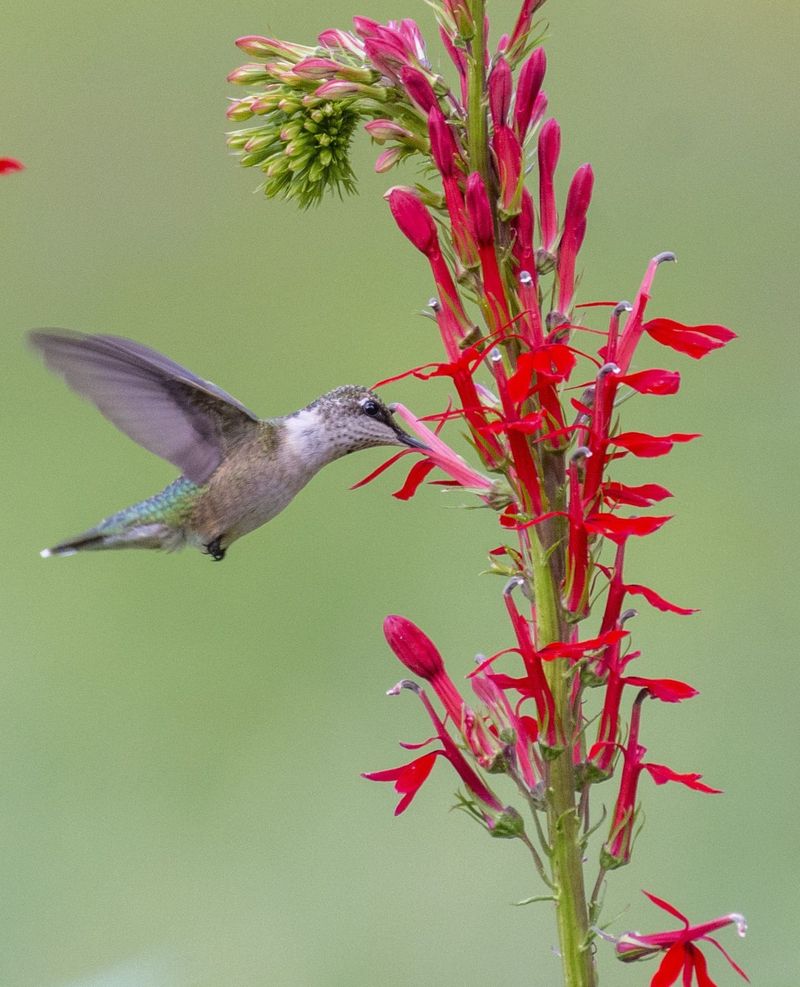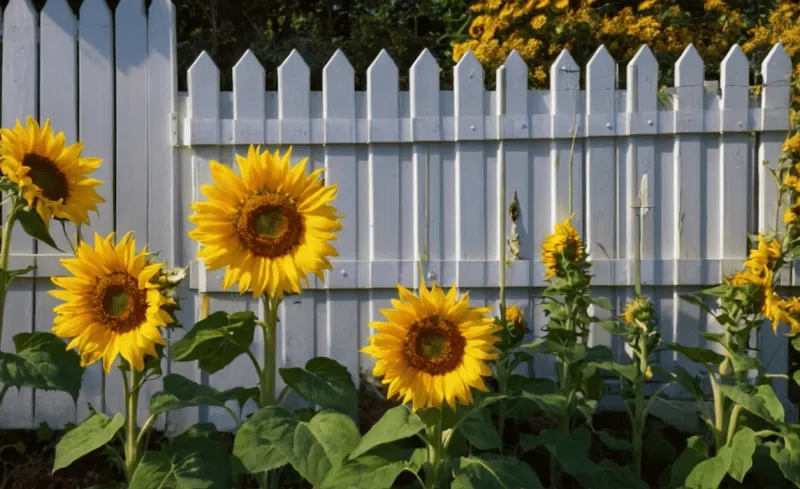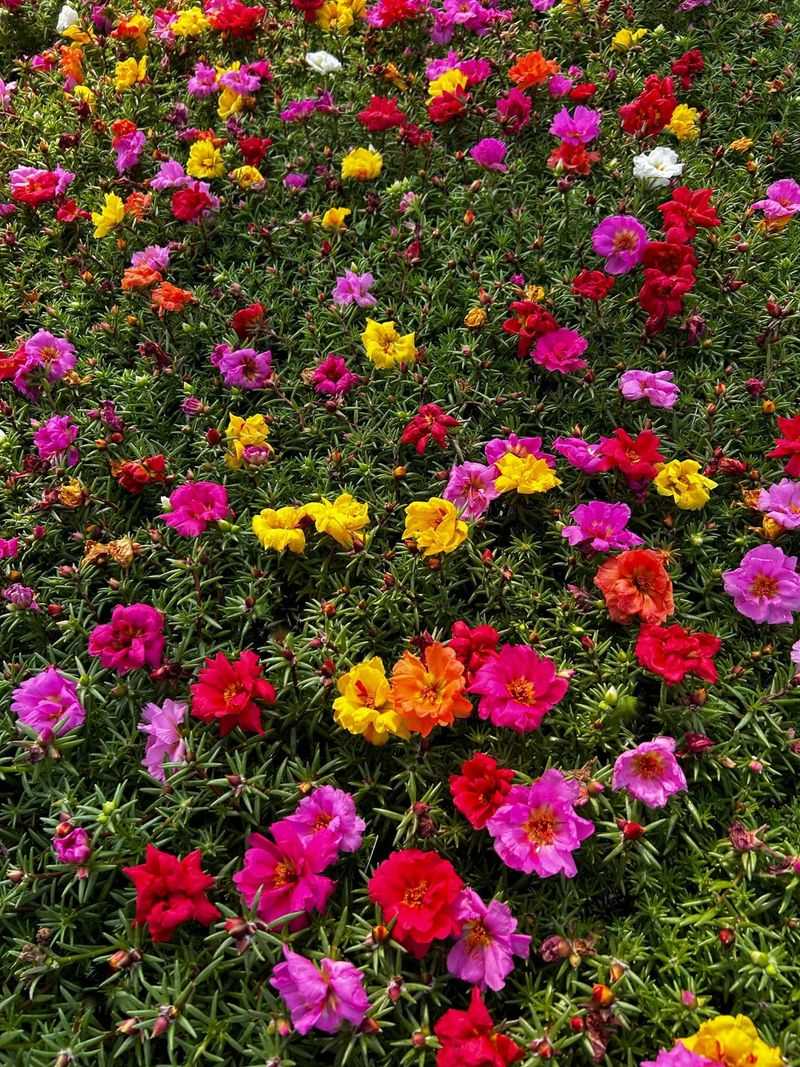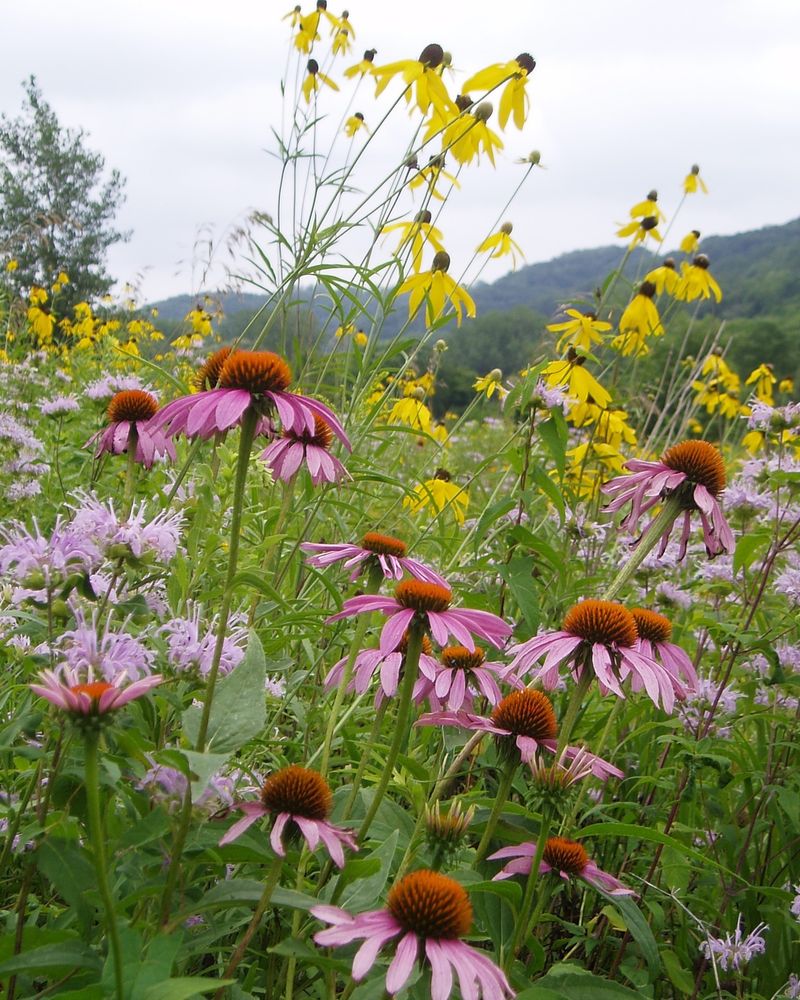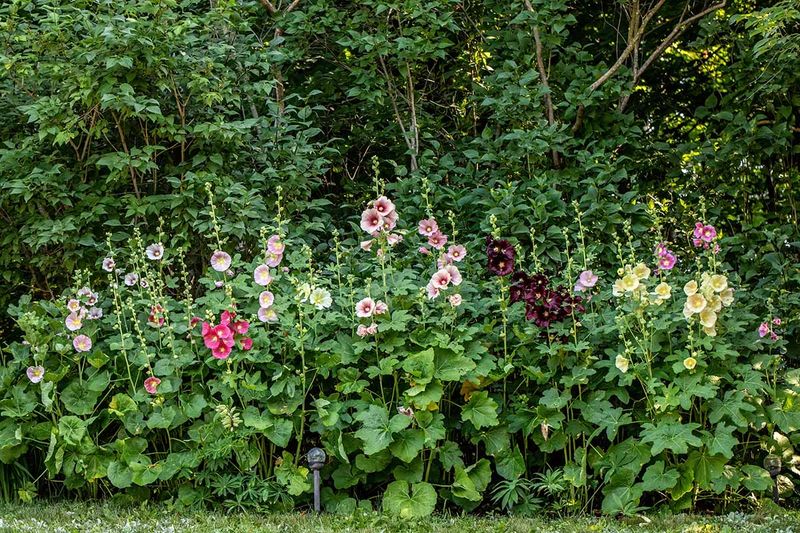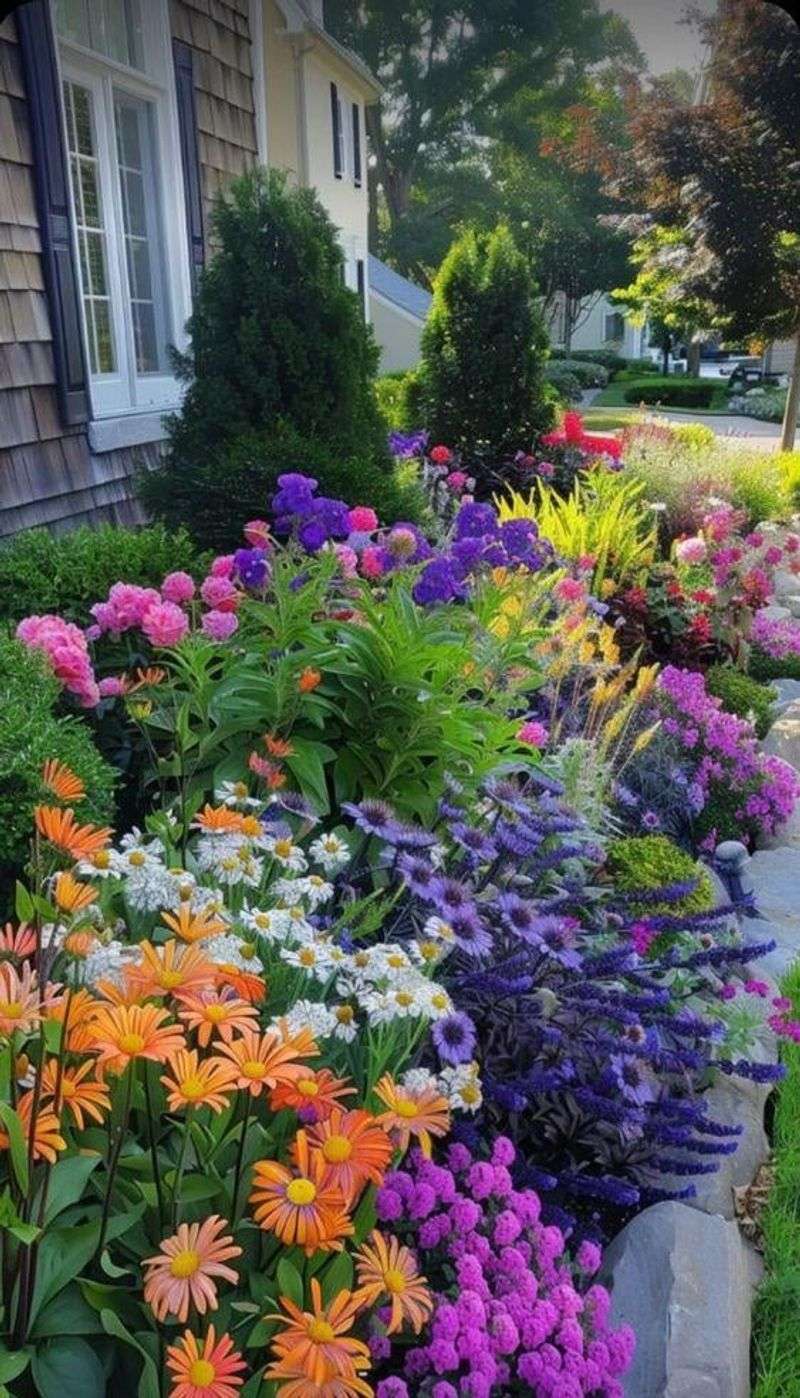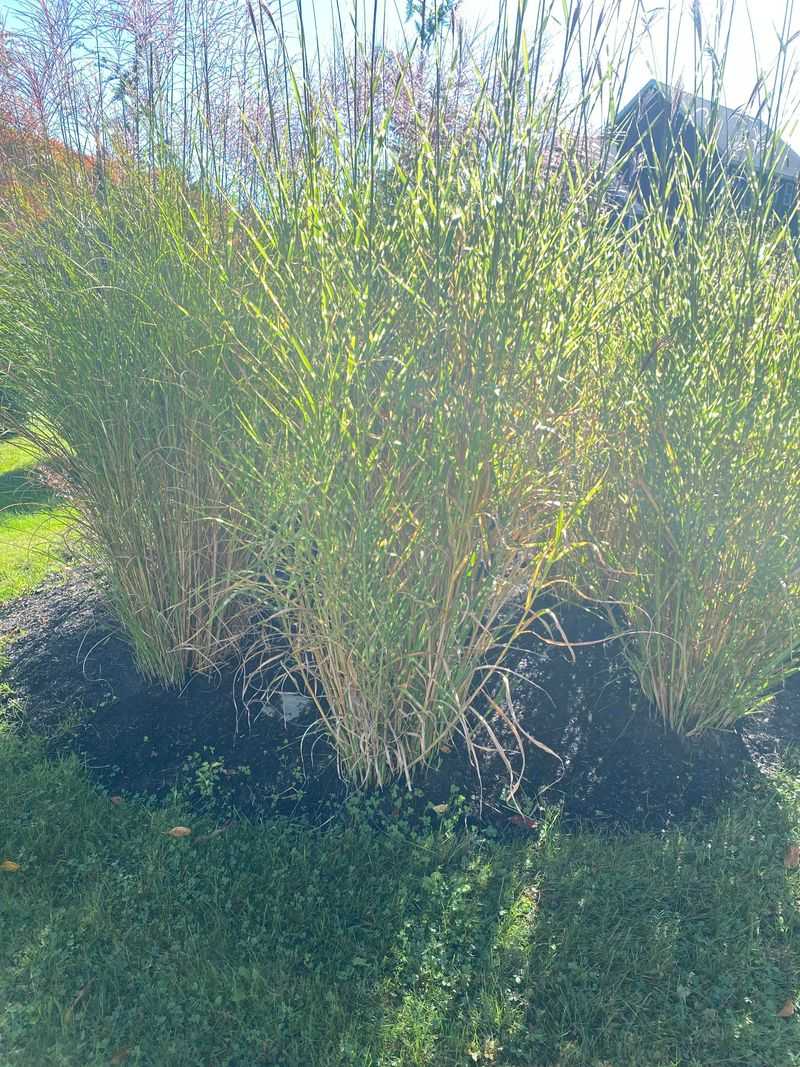July’s long, sunny days are like a spotlight for your garden—flowers burst into full color, showing off their most dazzling forms. It’s the perfect time to dream big and let your space shine with vibrant energy and texture.
Whether you’ve got sprawling beds or just a few patio pots, this month offers endless possibilities. Mix bold bloomers like dahlias and black-eyed Susans with airy fillers like cosmos and baby’s breath for layered, eye-catching designs.
With a few smart plant choices and playful layout tweaks, your garden becomes more than a backdrop—it’s your personal summer retreat, buzzing with life, color, and pure seasonal joy.
1. Create A Butterfly Highway With Coneflowers And Black-eyed Susans
Planting a mix of purple coneflowers alongside golden black-eyed Susans creates an irresistible landing strip for butterflies and bees. I noticed last summer that this combination practically hummed with activity from dawn till dusk.
The contrasting colors—purple against gold—create visual excitement while their similar heights and growing requirements make them perfect partners. They’ll happily grow in average soil with good drainage.
For smaller gardens, try clustering three plants of each type together instead of creating long rows. The impact is just as magical but works better in limited spaces.
2. Design A Moon Garden With White Blooms
Nothing feels more magical than evening strolls through a garden that glows under moonlight. White flowers like summer phlox, Shasta daisies, and moonflower vines reflect even the faintest light, creating an enchanted atmosphere.
Group these pale bloomers near patios or walkways where you’ll enjoy them during evening gatherings. The moonflower vine is especially fascinating—its large trumpet-shaped flowers unfurl in real-time as twilight approaches.
My favorite trick is adding silver-leaved plants like dusty miller or lamb’s ears between the white flowers for extra reflective power when stars come out.
3. Layer Heights With Delphinium Backdrops
Soaring blue delphiniums create a stunning vertical element that draws the eye upward and adds depth to any garden bed. Their towering spires can reach 4-6 feet tall, making them perfect background plants.
Place shorter flowers like cosmos or coreopsis in front of them, gradually decreasing heights as you move forward in the bed. This creates a theater-like arrangement where every plant gets seen.
Last year I planted a row along my fence and positioned a bench opposite them—it became my favorite spot for morning coffee as hummingbirds darted between the blue spires throughout July.
4. Craft A Fragrance Pathway With Summer Phlox
Summer evenings become magical when lined with sweetly scented phlox. These hardy perennials produce clusters of star-shaped blooms in pinks, purples, and whites that release their perfume most strongly at dusk—right when you’re outside enjoying the cooler air.
Plant them along both sides of garden paths or near windows where breezes will carry their fragrance indoors. Unlike some perennials, they maintain a tidy habit without much maintenance.
During a garden party last July, three different guests asked about the wonderful smell before even noticing the flowers. That’s the power of strategically placed fragrant blooms!
5. Paint With Complementary Colors Using Daylilies And Salvia
Orange daylilies paired with purple salvia create a color combination that practically vibrates with energy. The color wheel shows us that opposite hues intensify each other—making both flowers appear more vivid than when planted separately.
Look for reblooming daylily varieties like ‘Stella de Oro’ that will flower multiple times throughout summer. Their arching foliage also provides textural contrast to salvia’s upright habit.
My front border features this pairing, and passing neighbors regularly stop to comment. The combination performs beautifully in full sun and tolerates those occasional July dry spells that stress other plants.
6. Establish A Cut Flower Corner With Zinnias And Dahlias
Dedicate a sunny corner of your garden to flowers that thrive on being harvested. Zinnias and dahlias produce more blooms the more you cut them, creating a win-win situation for both your garden and indoor vases.
Plant in rows with 12-inch spacing, making it easy to move between plants with garden shears. Choose varieties in complementary colors—I love coral zinnias with burgundy dahlias for sophisticated bouquets.
Since starting my cutting garden three years ago, I haven’t bought a single flower arrangement. Even better, friends now receive homegrown bouquets that last twice as long as store-bought flowers.
7. Cool Down Hot Spots With Heat-Loving Lantana
Those baking hot spots where nothing seems to thrive? They’re perfect for lantana’s clustering blooms in sunset shades of orange, yellow, and pink. This tough-as-nails plant actually performs better when temperatures soar and rainfall becomes scarce.
Use lantana in containers near reflective surfaces like driveways or south-facing walls. Their spreading habit creates a waterfall effect when planted in raised beds or large pots.
After losing several plants to our brutal July heat wave last year, I replaced everything with lantana varieties. They not only survived but thrived, attracting dozens of butterflies to what had been a problem area.
8. Design A Meadow-Inspired Border With Coreopsis And Yarrow
Recreate the casual beauty of a wildflower meadow using cultivated varieties of native favorites. Golden coreopsis paired with the flat-topped flowers of yarrow in cream or pale yellow creates a relaxed, sun-drenched display reminiscent of country roadsides.
Allow these plants to mingle naturally rather than planting in rigid rows. Their informal growth habit looks more authentic when given space to weave together as they would in nature.
The combination has transformed my side yard from a forgettable passage into a destination. Children particularly love watching goldfinches perch on the sturdy stems while harvesting seeds in late summer.
9. Build A Hummingbird Haven With Bee Balm And Cardinal Flower
Scarlet bee balm (Monarda) and cardinal flower (Lobelia cardinalis) contain exactly what hummingbirds crave—tubular flowers filled with nectar and colored in the red hues these birds can see from remarkable distances. Plant them together for a hummingbird feeding station that doubles as a stunning garden feature.
Both plants prefer similar growing conditions: rich soil that stays consistently moist. They’ll thrive in spots that get morning sun and afternoon shade.
Since adding this combination to my garden, I’ve counted five different hummingbirds visiting regularly. My morning coffee spot now doubles as a front-row seat to their aerial acrobatics.
10. Soften Hardscapes With Cascading Petunias
Garden walls, steps, and raised beds gain instant charm when crowned with cascading waves of petunias. Modern varieties like ‘Wave’ and ‘Supertunia’ create impressive flowery waterfalls that can trail 2-3 feet by midsummer.
Choose colors that either complement or pleasantly contrast with your hardscaping materials. Soft lavender petunias look particularly elegant spilling over gray stone walls, while bright pink varieties pop against white structures.
During last summer’s drought, my hanging baskets struggled, but the petunias planted along my retaining wall flourished with minimal care—their roots stayed cooler and found more consistent moisture within the wall structure.
11. Create Garden Rooms With Tall Sunflower Dividers
Mammoth sunflowers can function as living walls when planted in strategic rows, creating distinct garden rooms with different themes or color schemes. Their impressive height—often 8-12 feet by July—forms natural dividers that add vertical interest.
Plant seeds in late spring, spacing them about 12 inches apart for a dense screen effect. Consider varieties like ‘Russian Mammoth’ or ‘Titan’ for the tallest results.
I used this technique to separate my vegetable garden from the entertaining area last year. The sunflowers not only provided privacy but became conversation starters when guests visited, with several children eagerly measuring themselves against the growing stalks throughout summer.
12. Design A Drought-Resistant Tapestry With Succulents And Portulaca
Water restrictions don’t mean sacrificing color! Portulaca (moss rose) produces abundant rose-like blooms in jewel tones while requiring minimal moisture. Pair with low-growing sedums and hens-and-chicks for a tapestry of textures that thrives in July heat.
Plant in well-draining soil or raised beds where water runs off quickly. The portulaca will spread between the succulents, filling gaps with bright blooms that open in sunshine and close at night.
My driveway border used to be a wasteland until this combination transformed it. Now it’s a rainbow of pink, orange, and yellow flowers nestled among blue-green and burgundy succulent rosettes—all without regular watering.
13. Plant A Pollinator Buffet With Diverse Native Flowers
Supporting local ecosystems becomes effortless when you plant native species like purple coneflower, black-eyed Susan, and blazing star together. Each attracts different pollinator species—from honeybees to native bumblebees and specialized mining bees.
Group at least three plants of each variety together to create noticeable blocks of color that pollinators can spot from a distance. Ensure continuous blooming by selecting varieties with staggered flowering times.
The transformation in my backyard has been remarkable. What started as a simple native plant bed has become a bustling ecosystem with dozens of insect species I’d never noticed before, from tiny metallic sweat bees to dramatic swallowtail butterflies.
14. Frame Garden Views With Hollyhock Sentinels
Stately hollyhocks create natural exclamation points in the garden, perfect for framing special views or marking transitions between spaces. Their towering flower spikes, often reaching 6-8 feet, draw the eye exactly where you want attention focused.
Plant them in pairs to create a gateway effect, or use them as corner anchors to define garden rooms. Though technically biennials, they self-seed so reliably that you’ll always have blooms once established.
The vintage cottage feel they bring is unmatched—I planted a row along my garage wall, transforming a utilitarian space into something from a storybook. Hummingbirds visit the blooms while goldfinches harvest seeds from spent flowers later in summer.
15. Overlooking Bloom Times And Creating Flower Gaps
Many gardeners focus on what looks beautiful at the garden center right now, bringing home plants already in full bloom. By mid-July, these early performers may be finished, leaving empty spaces and a garden past its prime.
Instead, research bloom times and select plants with staggered flowering periods. Include early, mid, and late summer bloomers in each bed to maintain continuous color throughout the season.
I learned this lesson the hard way after creating a gorgeous June garden that looked sadly depleted by Independence Day. Now I ensure each garden area contains something that peaks in July and August, like crocosmia, Russian sage, or late-blooming daylily varieties.
16. Forgetting About Watering Needs And Grouping Incompatible Plants
Planting moisture-lovers like astilbe alongside drought-tolerant plants like lavender creates maintenance headaches and unhappy plants. One will always suffer, regardless of your watering routine.
Group plants with similar water requirements together in hydrozones. This allows you to water efficiently and creates more favorable microclimates where all plants can thrive.
After repeatedly watching my black-eyed Susans develop powdery mildew while my hostas crispy-fried in the same bed, I redesigned with water needs in mind. Now both thrive in separate areas with appropriate companions, and my water bill has decreased substantially.
17. Creating A Flat Garden Without Structural Elements
Filling beds with only flowering perennials creates a beautiful but fleeting show that lacks year-round interest. When blooms fade, these gardens can look tired and uninspiring, especially in late summer.
Incorporate structural elements like ornamental grasses, compact shrubs, or plants with interesting foliage to maintain visual appeal between flowering periods. These elements provide the backbone that supports the more ephemeral flowering displays.
My front garden used to disappear after spring flowers faded until I added clumps of ‘Karl Foerster’ feather reed grass and ‘Little Lime’ hydrangeas. Now it maintains presence and form throughout the season, with the grasses adding movement and sound even when nothing is blooming.

